Use this interactive map for touring the United States. Double-click to zoom in, and click and drag to move the map around.
View Larger Map
Category Archives: Hip Guide to the USA
An Alternative Guide to New York City
An Alternative Guide to New York City
As the premier world metropolis, New York City’s allure is impossible to sum up with novel hyperbole. Countless films and songs make the effort but alas, only a personal visit to this oh so cosmopolitan capital will do.
While neophytes swoon under the glow of Times Square and loom of landmark skyscrapers from Empire State to Chrysler, New York, above all else, is a city of neighbourhoods. Manhattan enclaves like Harlem, Greenwich Village, Hell’s Kitchen, TriBeCa, SoHo and the Lower East Side embody the Big Apple’s burly heart and provide the proverbial marrow for tourists to feast on.
With that sentiment firmly in mind, here are five New York City alternatives to consider.
Charleston, South Carolina, Where America’s Civil War Began
By John D. Thompson
Throughout the early 1800s the American states had been riven by the issue of slavery, with Northerners opposed and Southerners defending the right to hold slaves. In 1860, opinion among Charleston’s residents was divided on the issue, but that December South Carolina’s legislature voted The Ordinance of Secession and seceded from the United States. The North was quick to react, and shortly after President Lincoln’s inauguration the Fort Sumter garrison was ordered to defend, and not evacuate, the fort which commanded the entrance to Charleston Harbor.
However, on April 12, 1861, Confederate troops issued the first shots of the Civil War when they fired upon Fort Sumter, whose heavily outnumbered and outgunned garrison was forced to surrender.
Castro District, San Francisco
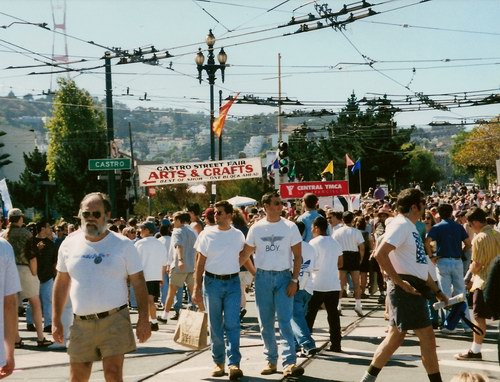
Castro Street Fair
If you’re gay, you probably already know about San Francisco’s Castro District, the center of the city’s gay community. Castro Street runs right thru the district, lined with interesting shops, restaurants and bars, and lots of rainbow flags.
Even if you’re not gay, you’ll be welcomed and treated well here. You can enjoy the beautiful Victorian architecture in this historic district. Don’t miss the ornate facade of the Castro theater, where you can watch classic art films.
You’ll find gay bookstores, fetish shops, coffee shops, and much more here.
During Gay Pride week, thousands turn out in the Castro for Pink Saturday, a separate celebration held in the Castro on Saturday night of SF Pride.
San Francisco Cable Cars
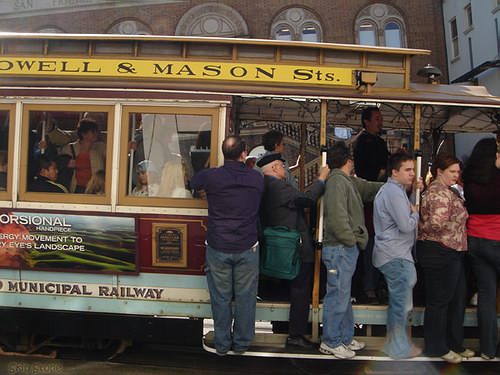
San Francisco’s Famous Cable Cars
San Francisco’s famous cable car lines still run up and down those steep hills. There are three lines, two of them go to Fisherman’s Wharf, the third runs up Nob Hill to Van Ness, so they are very convenient for tourists.
A good trip would be from Fisherman’s Wharf to Chinatown via the Powell-Hyde or Powell-Mason lines.
They are now charging $5 for a one-way ride, which is substantially more than the bus fare which is $1.50, so it’s not an economical way to get around the city, but certainly worth a ride or two!
You can also visit the Cable Car Powerhouse and Museum where you can see how the cable-car system works, and learn about its history. It’s open 10am to 6pm daily, admission is free!
Alcatraz Island, San Francisco
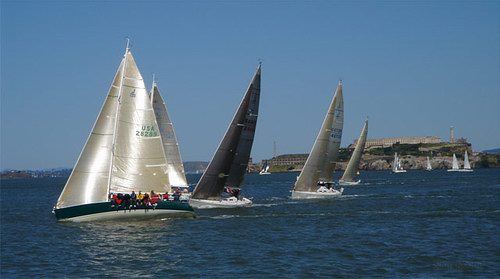
Sailboats scoot by Alcatraz Island
Many tourists to San Francisco take the ferry from Pier 41 (Fisherman’s Wharf) to Alcatraz Island. Besides offering great views back to San Francisco and the Golden Gate Bridge, visitors can tour the infamous prison where criminals like Al Capone, the Birdman of Alcatraz and Machine Gun Kelly were incarcerated.
Now only ghosts and tourists wander the cellblocks. Although from 1969 to 1971, Native Americans occupied the island in a failed attempt to reclaim it.
For Reservations: 415 705-5555
Haight-Ashbury, San Francisco
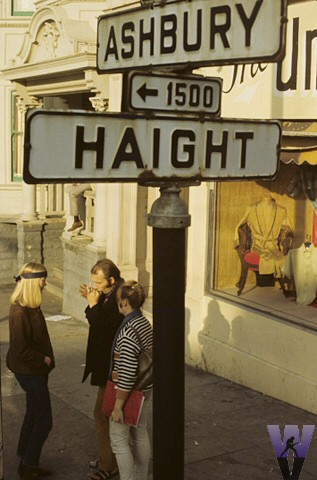
The famous corner
At the height of the Summer of Love in San Francisco in 1967, the Haight district was the magnet that drew thousands of young people from all over the country, seeking a new life of freedom. These kids poured into the area, overwhelming the existing services. Local groups were organized to deal with the onslaught. The hippies were poor, out-of-work, and lacking the most basic necessities like food, shelter and clothes.
Groups like the Diggers distributed free food and clothes and other groups assisted with free medical care and shelter.
Drugs were everywhere, including the ubiquitous marijuana, and what was then a new drug, LSD turned on San Francisco and eventually the entire world to Acid Tripping. Rock groups like the Grateful Dead, Jefferson Airplane, Quicksilver Messenger Service and Janis Joplin’s Big Brother and the Holding Company put on concerts at the nearby Fillmore or in the Panhandle of Golden Gate Park.
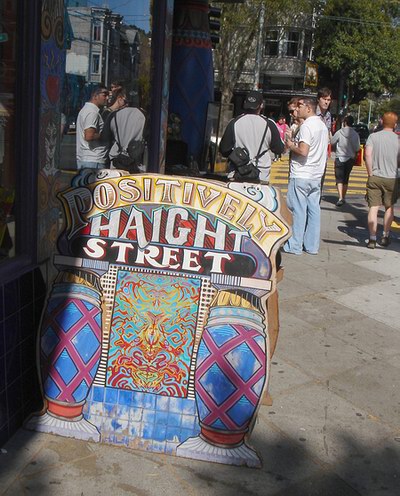
The Haight scene today
Today the scene has definitely changed. There are no longer hordes of homeless kids on the street, although you will notice a lot of young wannabe hippie kids strolling around. There are still groovy cafes, boutiques and night clubs to explore.
There’s always a gathering at nearby Hippie Hill in Golden Gate Park, with the ever present drum circle.
Fishermans Wharf, San Francisco
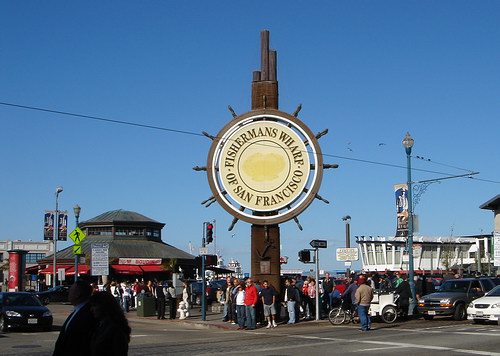
Fisherman’s Wharf, San Francisco
Fisherman’s Wharf in San Francisco is a great place to spend the day, strolling along the waterfront, absorbing the fantastic Bay views, eating fresh, delicious seafood, even take a cruise around the Bay.
You can enjoy live entertainment in Ghirardelli Square, visit the famous home of Ghirardelli chocolate, drop by Ripley’s Believe It or Not Museum, the Wax Museum, the Cannery, Hyde Street Pier and the National Maritime Museum next to the Aquatic Park and beach where some people actually go swimming in the Bay!
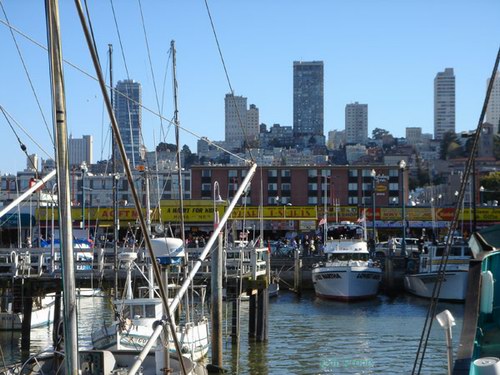
Fishing Boats at Fisherman’s Wharf, San Francisco
Don’t miss the clam chowder in a sourdough bread bowl at Boudin’s Bakery or any other restaurant. If you’ve never had this, you are missing a great treat!
Fisherman’s Wharf is a very crowded place, as most tourists visiting the city come here. There is little parking in the area, you should take public transport or a taxi here. You can take Muni buses #15 and #30, F line, Powell-Mason and Powell-Hyde cable cars.
However, there is a fair number of parking spaces the far side of the Aquatic Park, right next to Fort Mason. If you don’t mind the extra walk you might find a spot there, but note the parking time limits.
Golden Gate Park, San Francisco
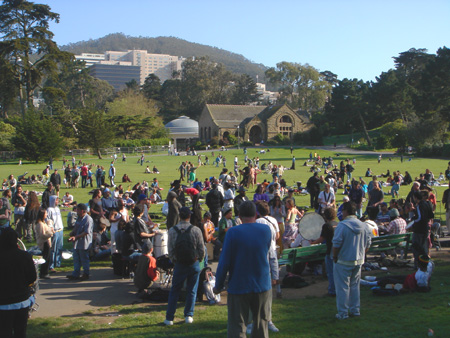
Hippie Hill Drum Circle in Golden Gate Park.
Golden Gate Park is a fine place to visit on a sunny day in San Francisco. The largest man-made park in the world, it contains a number of popular attractions.
The recently updated de Young Museum houses a great selection of art from around the world.
The beautiful Japanese Tea Garden is a serene place to relax, when it’s not full of visitors.
The Botanical Gardens is a wonder with more than 6000 species of plants from all over the world, divided by region, including a spectacular cactus garden.
The Conservatory of Flowers, sheltered in a Victorian glass greenhouse, is home to thousands of plants, many rare, from around the world.
Nearby is Hippie Hill where hippies gather every afternoon for a drum circle. Hippy Hill isn’t marked on maps but it’s very close to the Conservatory, just behind the tennis courts. If you come down Haight Street to the park, and walk thru the park (following the hippies) you’ll find it easily.
There’s also Stow Lake, where you can rent a boat, a childen’s playground, Dutch windmills and miles of paths to walk, jog or bicycle.
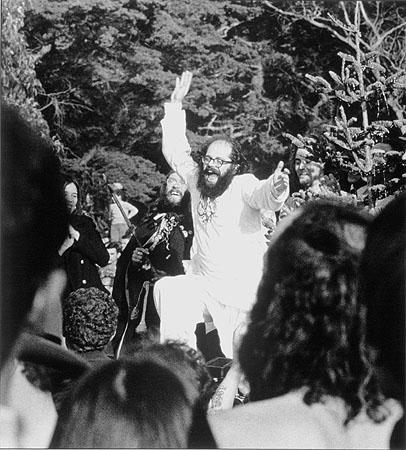
Allen Ginsberg at Human Be-In 1967
Golden Gate Park is also where many transformative events occured in the 1960s, including the first Human Be-In, and numerous concerts by the Grateful Dead and other Bay area rock bands.
Golden Gate Bridge, San Francisco
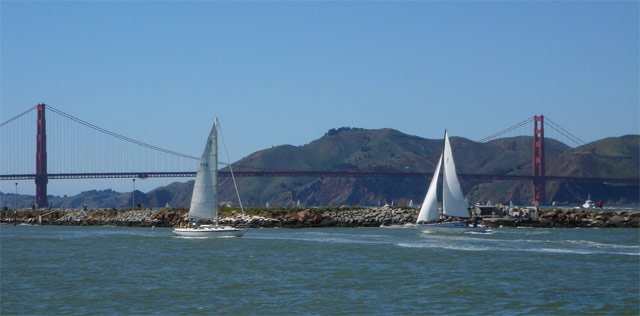
Sailing in the bay in front of Golden Gate Bridge
Golden Gate Bridge, that icon of San Francisco, extends two miles across the mouth of San Francisco Bay. It was built in 1937, and provides the major link north of the city, Hwy 101.
The orange/red bridge, often obscured by fog, is the most photographed bridge in the world. There’s a toll of $5 for those coming into the city from the north (free leaving the city).
At each end of the bridge are scenic overlooks. On the north side, Vista Point looks back at the city and on the south side, take the “last SF exit” to get a great view!
You can walk or take a bicycle on the bridge for more outstanding views and a great workout!


 Whether you come for a quick visit or cross-country tour, you will find a wealth of information about destinations from coast to coast. The Hip Guide to USA offers the highlights of the country, and contains many tips for making your stay here more rewarding.
Whether you come for a quick visit or cross-country tour, you will find a wealth of information about destinations from coast to coast. The Hip Guide to USA offers the highlights of the country, and contains many tips for making your stay here more rewarding.